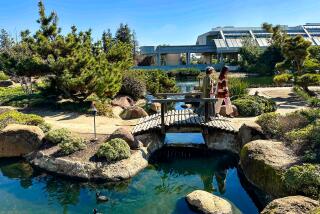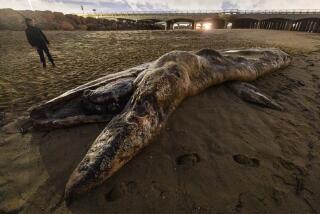Beyond the beach: Try Maui’s tropic scape or Point Reyes’ dunes
When it comes to long walks on warm, sandy beaches, Southern Californians are spoiled by our many choices. But how about strolling miles of tropical beach? Or sauntering across acres of sand dunes? Or traipsing miles of sandy coast with dramatic vistas and views of humpback whales? Or even dipping into local culture as you meander?
Tropical breezes
Amble along Sugar Beach on the southwest coast of Maui (from Maalaea east and south for four miles to the Koieie Loko Ia Fishpond). The sand changes from golden to white, and just beyond, the beach palm trees sway in the tropical breeze. Should you pass the section called Ka Lae Pohaku Beach about 7 a.m. on a Tuesday or Thursday, you’ll see Kihei Canoe Club members launching traditional-style Hawaiian outriggers. The club offers rides, preceded by a brief lesson about Hawaiian culture and outrigger paddling — yes, guests help propel the canoes. Then paddlers head into Maalaea Bay, where they may see green and leatherback turtles, manta rays and, from October to April, humpback whales.
Dunes and wildlife
Five-mile-long Limantour Beach in Point Reyes National Seashore — more than half of which is on a spit between the Pacific Ocean and the Estero de Limantour — is a favorite of San Franciscans. Onshore breezes have created dunes up to 20 feet tall. Harbor seals often frolic in the chilly surf, and humpback whales have been spotted swimming about 100 feet from shore.
“You can go to Limantour on any busy weekend day and walk 10 to 15 minutes from the parking lot entrance to the beach, and you’ll be away from people,” said John Dell’osso, chief of interpretation and resource education for Point Reyes National Seashore. If you walk west toward the end of the peninsula and cross 300 yards of dunes to the estuary, you may see thousands of bat rays and leopard sharks in their nursery and feeding grounds.
In Oregon, between the towns of Coos Bay and Winchester Bay, are miles-long stretches of mostly isolated beach, broken only by a few small rivers and streams. Many of these beaches are adjacent to the Oregon Dunes National Recreation Area, popular with off-highway vehicles and dune buggy enthusiasts. For quiet strolling, visitors might prefer two iconic beaches: the five-mile-long Pistol River Beach and eight-mile-long Cannon Beach.
Wandering along Cannon Beach, on Oregon’s northern coast, you’ll see many of the state’s famous sea stacks, vertical rock columns jutting up offshore or from the pale gray beach itself. Locals say Haystack Rock, at 235 feet tall, is the third-largest intertidal monolith in the world. From April to October, the upper reaches of Haystack Rock hold the burrows of endangered tufted puffins raising chicks. At its base year-round, volunteers give visitors information about the tidal pools. From about two hours before low tide till one hour after, they point out purple and orange starfish, green sea anemones and other intertidal dwellers.
Visitors who stroll the beach at Pistol River, on Oregon’s southern coast, see windswept dunes, more dramatic sea stacks and lots of shorebirds and waterfowl. Hang onto your hat, though, because this is a big ocean windsurfing area.
The prize for the longest uninterrupted stretch of walkable beach in the West goes to the 28 miles of sand along Washington’s Long Beach Peninsula, just north of the mouth of the Columbia River. Fortify yourself with coffee at Adelaide’s Books & Coffee on Bay Avenue in Ocean Park, then head west to the beach and turn left. From much of December through May you might see gray whales migrating. If you have any energy after you reach the south end of the beach, you can hike to the North Head Lighthouse, where during the summer docents lead visitors up the 69 stairs to the top.
Another Long Beach, this one in Pacific Rim National Park on the west coast of British Columbia’s Vancouver Island, and the contiguous Schooner Cove beaches have nine miles of sand with driftwood, which visitors sometimes turn into seesaws or sculptures. The gray beach is backed by a temperate rainforest with conifers, sword ferns, moss, hanging lichens, epiphytes (plants that grow on other plants), deer, bears and, once in a while, a wolf or cougar. As you rove along, you might see Steller and California sea lions resting on small islands or playful river otters frolicking in the surf or even, if you’re very lucky, sea otters in the sea. In the fall, you might see trumpeter swans along the mouth of Sandhill Creek. The area gets 120 inches of rain a year so come prepared for drizzle, mist, fog and rain.
For the truly serious
If you’re serious about getting away from it all, the sandy beaches near Yakutat, Alaska, northwest of Juneau, stretch 50 miles north and 100 miles south. Visitors can head out of town and walk 10 miles southwest on the taupe sand of Cannon Beach, possibly seeing deer, bears or an occasional lynx. “It’s always fun to go to the beach. You might find old glass fishing balls, and in July or August, you might see a brown bear eating wild strawberries,” said Jack Endicott, who owns the Icy Waves Surf Shop and has lived in Yakutat nearly 30 years. Of course, that also means being well prepared and using outdoor smarts when strolling in Alaska.
travel@latimes.com
More to Read
Sign up for The Wild
We’ll help you find the best places to hike, bike and run, as well as the perfect silent spots for meditation and yoga.
You may occasionally receive promotional content from the Los Angeles Times.






